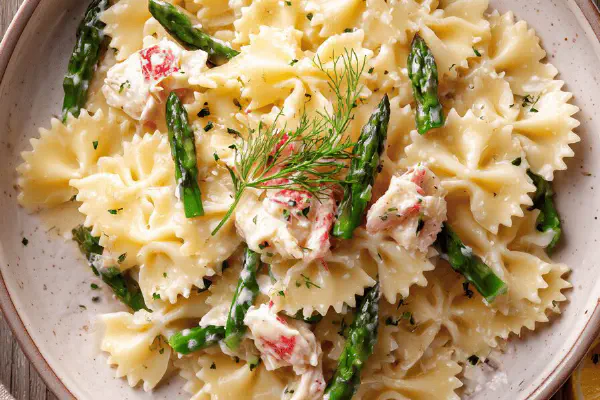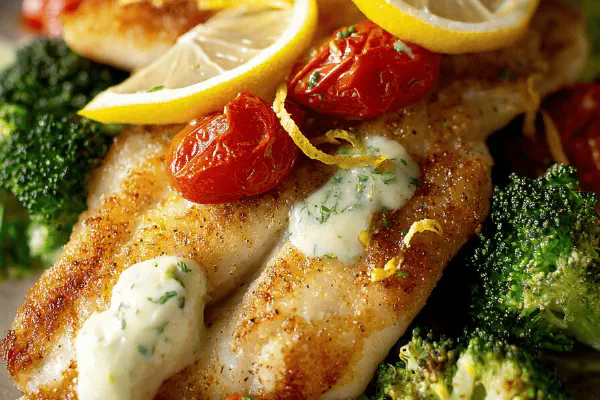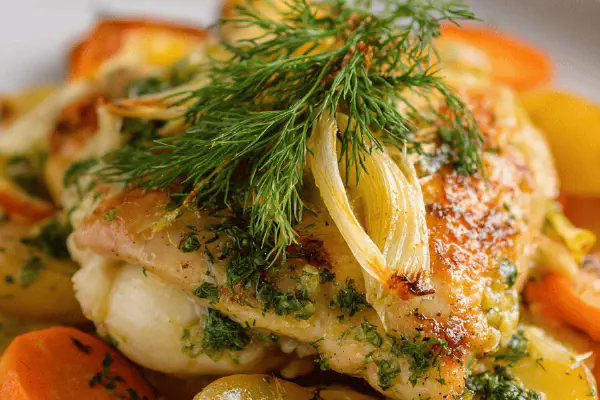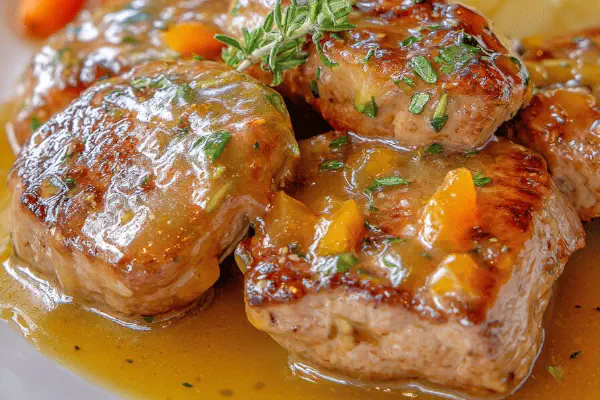Crab Lemon Asparagus Pasta

By Emma
Certified Culinary Professional
Ingredients
- 375 g (13 oz) farfalle or bow-tie pasta
- 2 medium shallots, finely chopped
- 4 cloves garlic, minced
- 40 g (about 3 tbsp) unsalted butter
- 125 ml (1/2 cup) dry white wine
- 500 ml (2 cups) chicken or vegetable broth
- 650 g (1 1/2 lb) asparagus, trimmed and cut into 3 cm pieces
- 180 ml (3/4 cup) crème fraîche
- Zest of 1 lemon
- 2.5 ml (1/2 tsp) fresh thyme leaves, chopped
- 225 g (1/2 lb) fresh crab meat or 2 cans (120 g/4 oz each) crab chunks, drained
- Salt and freshly ground black pepper
- Olive oil (for tossing pasta and finishing)
About the ingredients
Method
- Bring large pot of salted water to boil. Cook farfalle until al dente—firm but tender, a bite to it. Drain, reserve 125 ml (1/2 cup) pasta water. A drizzle of olive oil to stop sticking; set aside.
- Melt butter over medium heat in a large skillet. Add chopped shallots and garlic. Must soften but never brown. The smell should become sweet and inviting within 3–5 minutes; if browning, lower heat. Patience here builds a mellow base.
- Pour in white wine. Let it bubble, reduce to nearly dry—concentrates flavor, lifts the sauce. This step is key to avoid a watery dish.
- Add broth and chopped asparagus. Bring to boil, then simmer uncovered. Watch for asparagus to turn bright green and become tender but still with snap. Usually 7–9 minutes. This timing can vary if spears are very thick or thin—poke with fork, should pierce with slight resistance.
- Off heat, stir in crème fraîche, lemon zest, thyme. Taste now. The sauce should be tangy, herbal, creamy. Adjust with salt and freshly ground pepper. Creaminess from crème fraîche replaces mascarpone’s texture but gives a brighter note. If mascarpone preferred, can swap back.
- Gently fold in crab meat last. Crab warms through quickly. Be gentle to keep flakes intact. If canned crab—pat dry well to avoid watery sauce. Fresh crab must be cooked or warmed just enough to keep tender.
- Add noodles to skillet, toss carefully with sauce to coat evenly. If sauce feels thick, splash reserved pasta water little by little to loosen. The starch from the pasta water helps sauce cling to noodles.
- Taste again. Adjust seasoning if needed. Serve immediately. Optionally finish with drizzle of olive oil or squeeze of lemon juice for brightness.
- Leftovers: reheat gently; crab meat can toughen if overheated. Add splash of broth or cream to revive sauce.
Cooking tips
Chef's notes
- 💡 Reserve pasta water before draining farfalle. It’s not just liquid, starch helps sauce cling to noodles. Don’t add too much at once — drizzle slowly, stir in between. Sauce can easily get too thin otherwise. Olive oil after draining avoids sticky mess. Keep pasta warm but not dry.
- 💡 Butter carries flavor here. Don’t swap with margarine or oils that lack richness. Melt carefully over medium heat. Shallots must soften without browning — watch their color closely. Garlic releases aroma early; mix timing right to avoid bitterness. Smell cues help more than timers.
- 💡 White wine reduction is crucial. Let it bubble vigorously but don’t scorch or burn off fully. Stop before dryness, a sticky bottom signals too far. This step shells moisture, intensifies taste, and controls sauce texture. Too watery here ruins everything later.
- 💡 Asparagus timing varies. Thickness determines cook time 7–9 minutes typical. Visual bright green and slightly glossy surface is a sign. Snap test with fork or tongs — slight resistance but cooked through. Overcooked asparagus turns dull and mushy, kills contrast against pasta texture.
- 💡 Crab meat folding last avoids toughness and breaking flakes apart. Fresh crab warms quickly; canned needs drying to prevent sogginess. Gentle folding with wooden spoon or spatula preserves structure. Reheat leftovers very gently, add splash of broth or cream to restore sauce texture if dries.
Common questions
Can I use canned crab only?
Yes but dry well. Waterlogged canned crab dilutes sauce. Pat with paper towels. Fresh preferred but pantry cans okay backup. Adjust seasoning after adding crab.
What if asparagus is thick?
Increase simmer time but check frequently. Fork test best. Don’t rush this stage. Thick spears need longer to soften but keep snap. Overcooked loses crunch. Cut pieces evenly for uniform cooking.
Sauce too thick at end, fix?
Add reserved pasta water little by little. Starch helps sauce cling and loosens consistency. Avoid plain water or broth unless strong flavor needed. Lemon juice brightens and thins slightly too — taste first.
How to reheat leftovers?
Low heat essential. Crab toughens fast if overheated. Use pan with splash broth or cream. Microwave possible but watch short bursts, stir between. Too hot means dry crab, grainy sauce texture.



